From the pioneering long hood/short hood configuration to the staccato growl of its prime mover, the Alco RS-1 lives on in this accurate HO scale model from Atlas. I reviewed the Digital Command Control-equipped version that includes a factory-installed ESU LokSound Select dual-mode sound decoder.
The prototype. Alco introduced the light road switcher, the RS-1, in 1941 at the behest of the Chicago, Rock Island & Pacific. That railroad wanted a locomotive that could handle road duties by day and switch yards at night. The RS-1 had the same 1,000-hp 539 diesel engine as an Alco S-2 switcher, but featured a hood-style body on a lengthened frame and Association of American Railroads type B road trucks. Alco and its subsidiaries would build more than 400 RS-1 diesels for several North American railroads during its 19-year production run.
The versatile road switcher could handle switching chores and local freights single-handedly or through freights in m.u. operation. The RS-1 also had plenty of room in its short hood for a steam generator, and many of the road switchers were used in commuter and local passenger service. Several RS-1s have been preserved as static displays and a few still haul tourist trains.
The model. The major dimensions of the Atlas model match prototype drawings in the Model Railroader Cyclopedia: Vol. 2, Diesel Locomotives (Kalmbach Publishing Co., out of print). Because model couplers are typically oversize, the model’s length between coupler pulling faces is 2 scale feet too long.
The plastic shell features well-defined detail, including the grills, rivet seams, and access doors. Details are accurately placed, according to prototype photos.
Separate parts include the horn, brake wheel, grab irons, and lift rings. The scale-profile handrails are made of flexible acetal plastic to resist breaking.
There’s also glazing in all the cab windows. I appreciated that Atlas included painted engineer and fireman figures that are facing the correct way for long-hood-forward operation in our Soo Line sample.
The plastic truck sideframes accurately model AAR type B trucks. Molded details include the appropriate solid journal boxes and leaf and coil springs. The brake cylinders are separately applied.
Our review sample is decorated as Soo Line no. 105, which was one of eight RS-1s that the Soo received from the Duluth, South Shore & Atlantic. The paint scheme matches prototype photos, including the Soo Line lettering in the correct font. The grab irons and end handrails are correctly painted yellow. Even the tiniest printing of stencils such as fuel fill and fire extinguisher inside door are legible.
Mechanism. After removing the coupler draft gear boxes, I carefully lifted off the locomotive body shell. The motor and flywheels rest in the center of the die-cast metal frame, which also includes the locomotive fuel tank. Worm gears transfer power from the motor to truck-mounted gearboxes. Die-cast metal weights at each end of the frame add to the model’s heft.
The main printed-circuit board is mounted atop the mechanism. The ESU LokSound Select DCC decoder is attached to a 21-pin socket on the PC board.
Performance. The Atlas model featured impressive performance on our DC and DCC test tracks. As you can see in the charts at right, the RS-1 crept along steadily at just under 1 scale mph at 6.5 volts on our DC track and in speed step 1 on our DCC track. During both speed tests the model reached a prototypical top speed of 65 scale mph.
The ESU LokSound decoder gives the RS-1 exceptional back-electromotive-force control. The model maintained a steady 2 scale mph through a yard ladder and up a 3 percent grade without any throttle adjustment.
To further fine-tune locomotive performance in DCC, the ESU decoder supports setting up a simple speed curve using configuration variables (CVs) 2, 5, and 6. A more precise custom speed curve can also be set up with CVs 67 to 94. For more realistic starts and stops, I added momentum effects to our sample using CVs 3 and 4. I ran the model by itself through an 18″-radius curve without any difficulty. However, the RS-1 looks more realistic and will perform better when hauling scale 50-foot or longer rolling stock on curves with a 22″ radius or greater.
The Atlas RS-1 has a respectable 3.2 ounce drawbar pull that’s equivalent to 45 HO scale freight cars on straight and level track. That’s plenty of pulling power for a model of a light road switcher that typically worked in relatively flat territory.
Sound and lights. The distinctive growl of the Alco prime mover through the enclosed speaker sounded like prototype recordings. The default single-chime air horn sounded correct, but for those who disagree there are 16 other horn options. In addition to the horn and bell, other user-triggered effects include coupler crash, sanding valves, and diesel radiator fans. Pressing function 16 triggers a “clickety-clack” effect when the locomotive is moving to simulate steel wheels rolling over jointed rail.
The decoder supports manual notching, allowing the engine rpm sound to be controlled independently from the locomotive speed. When I pressed function 9, the rpm would notch up, then I had to press 9 again to stop at a particular notch. Function 10 worked the same for notching down. I found this method more cumbersome than simply being able to go up one notch per key press as with other decoders.
All 22 functions can be remapped to any numerical throttle key. The volume level of most of the sound effects can be independently controlled. Instructions for these and other programming tasks are available in a free downloadable user manual at www.esu.eu/en/start/ .
On our DC test track, most of the sounds were automatic. I was impressed that the engine rpm prototypically increased before the locomotive started moving. The rpm then increased or decreased with the throttle setting.
A quick decrease in the throttle triggered the sound of squealing brakes. The sounds remained constant and didn’t cut out when I changed the unit’s direction.
Out of the box, the headlights and illuminated number boxes operate according to direction on both DC and DCC layouts. The headlights also dim when the locomotive stops. The golden white light-emitting diodes (LEDs) have the color of prototype headlights.
I had more control over the lighting with DCC, as I could manually dim the headlight using a function button. I also programmed the headlights for more prototypical independent operation. However, since the number boxes are illuminated by the headlight LEDs via plastic light pipes, they can’t be controlled independently.
As with its first-generation prototype, the Atlas RS-1 would make a versatile workhorse on an HO scale model railroad. Whatever duties it performs, the locomotive’s ESU decoder will make it a lot of fun to operate.
Manufacturer
Atlas Model RR Co. Inc.
378 Florence Ave.
Hillside, NJ 07205
www.atlasrr.com
Era: late 1940s to 1970s (as detailed)
Road names (two numbers each): Soo Line; National Ry. of Mexico; Milwaukee Road; New York Central; New York, New Haven & Hartford; Spokane International; and Tidewater Southern. Undecorated version available.
Features
▪▪Accumate plastic knuckle couplers at correct height
▪▪All-wheel drive and electrical pickup
▪▪Metal wheels in gauge
▪▪ESU LokSound Select dual-mode decoder (Gold Series)
▪▪8-pin decoder socket (Silver Series only)
▪▪Five-pole, skew-wound can motor with brass flywheels
▪▪Golden-white light-emitting diode (LED) headlights
▪▪Minimum radius: 18″
▪▪Weight: 12.1 ounces





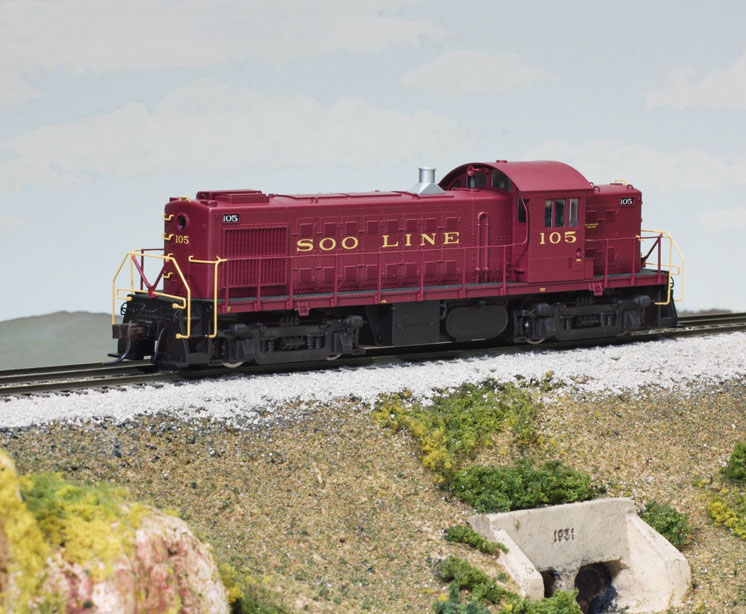
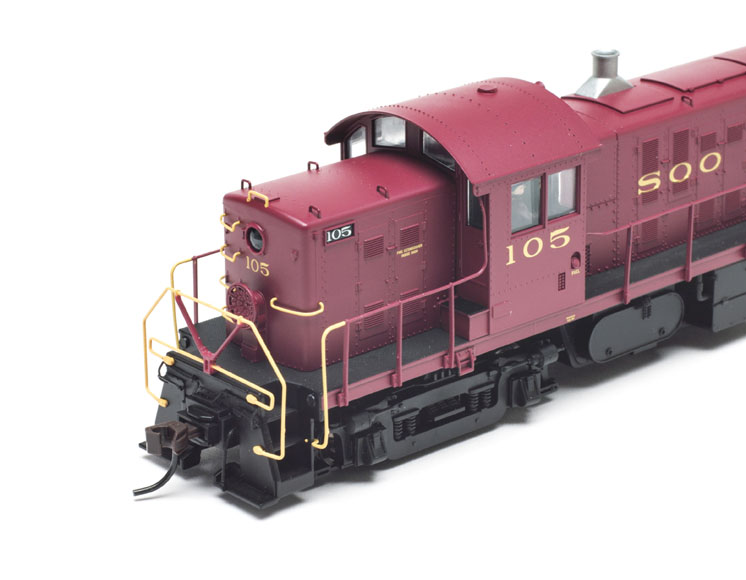
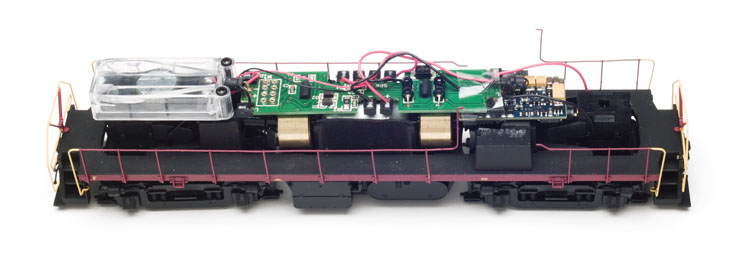
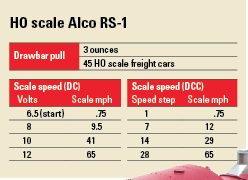

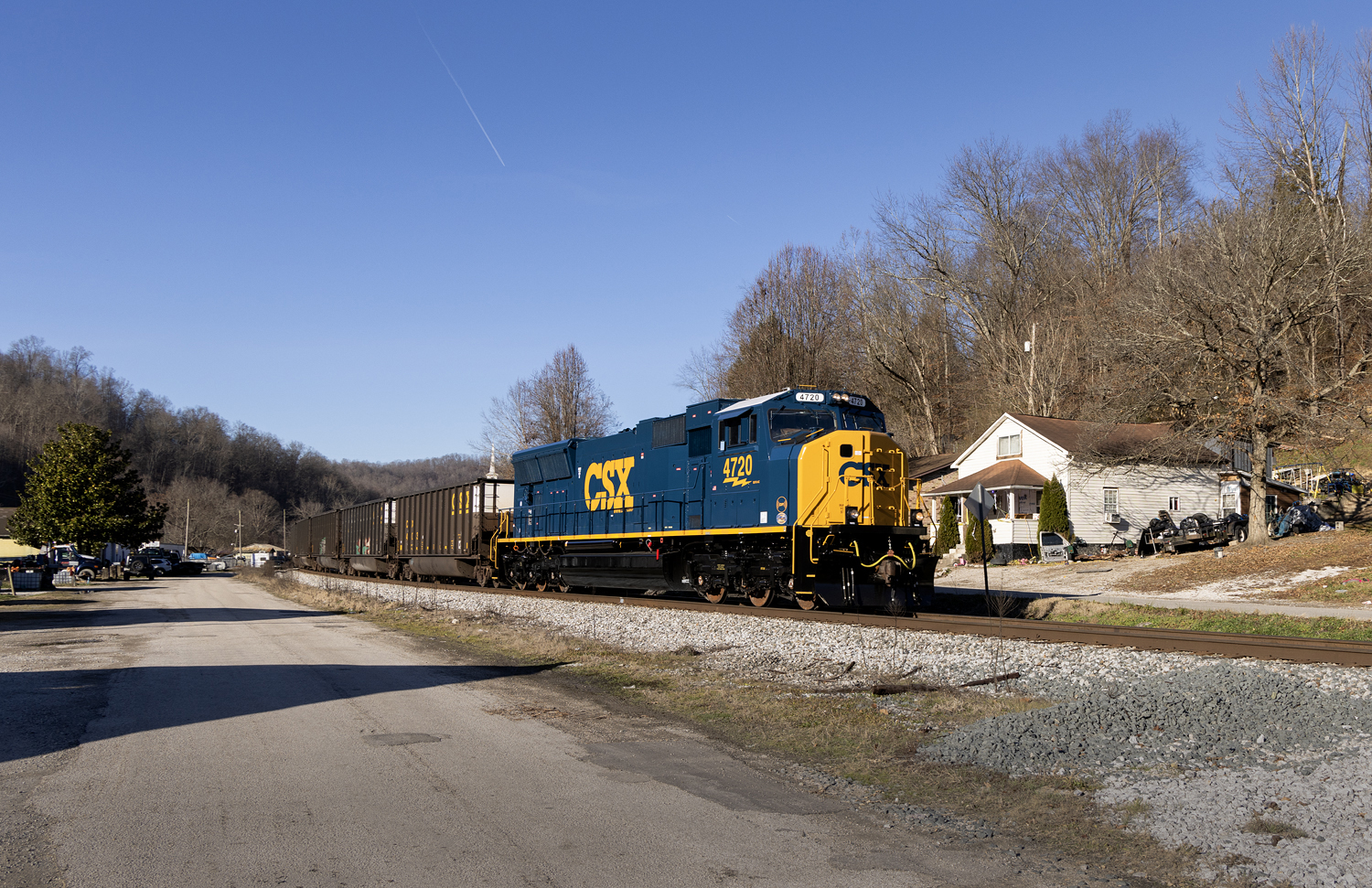

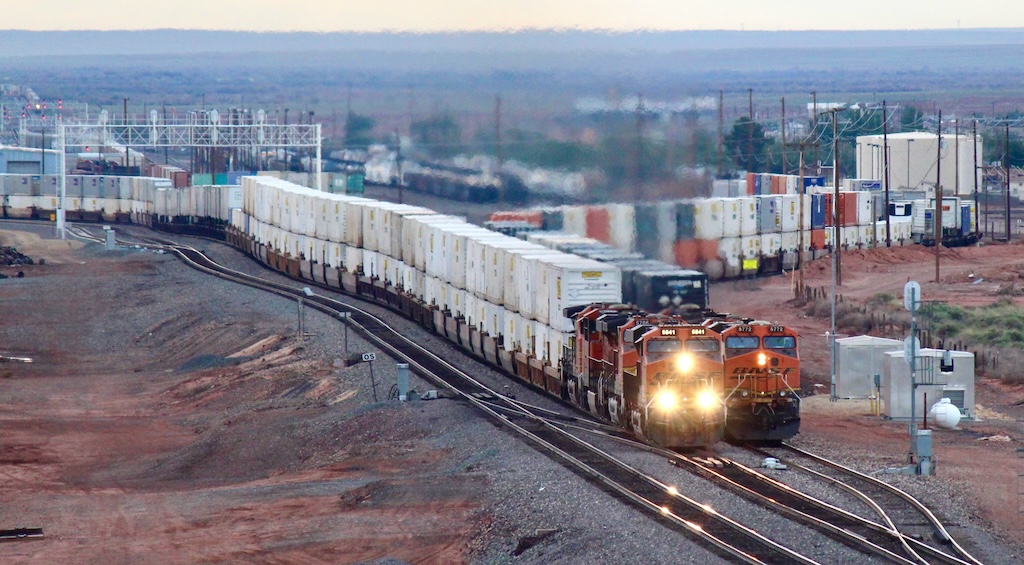




I feel Atlas could have at least came out with a Rock Island Railroad Alco RS-1 version of this fine locomotive. I would point out that it was at the Request of the Rock Island Railroad that Alco considered building the locomotive in the first place. What a disappointment they could not honor the Rock Island. I hope in the future they would consider building a Rock Island Version. I am a third generation former employee of the Rock Island Railroad and it is the Railroad I model on my HO scale Rock Island Western Division layout. Mark Monroe